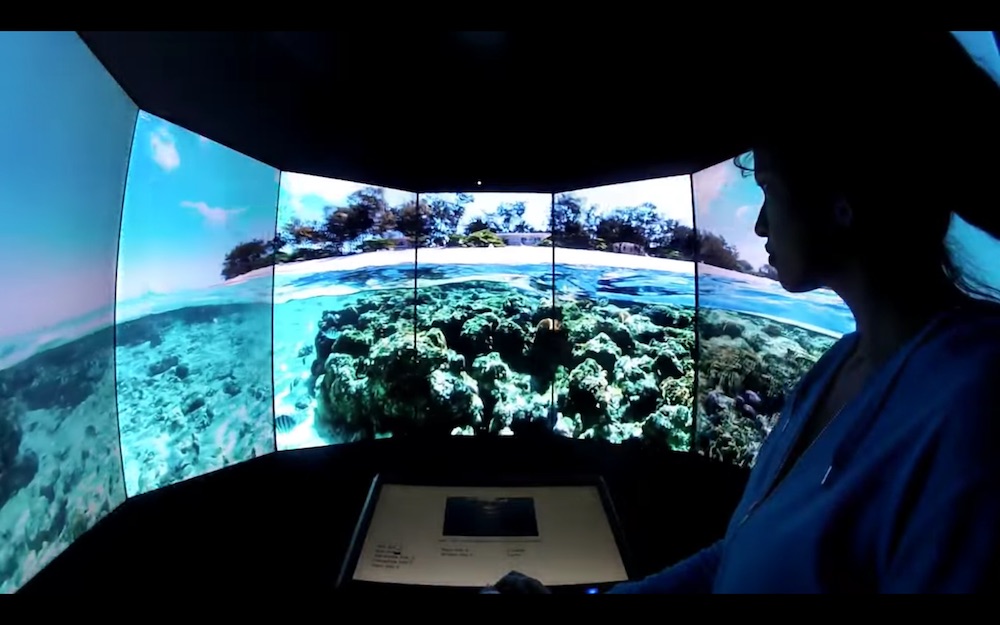Liquid Galaxy is an open source project created by Google which uses a cluster of computers and connecting monitors to create a uniquely immersive experience. The platform started out as a panoramic multi-display Google Earth viewer, and thanks to companies like End Point the project kept growing into a more refined digital experience.
Liquid Galaxy is a dazzling display platform that immediately draws attention to the rich imagery and geography of the Earth and its oceans, using a variety of satellite imagery, oceanic data, points of interests, or any large format images. Once content is uploaded, the viewer then stands in front of the panoramic screens and uses a touchpad or joystick to look around and navigate through the image or video.

The Liquid Galaxy is perfect for use in public aquariums and provides enhanced story-telling opportunities with the use of vivid panoramic photos of coral reefs, sharks, or famous undersea wrecks. These images can be packaged into tours that guide the visitor from place to place as part of a larger comprehensive story.
In addition to flat two-dimensional imagery, the connected screen can play full panoramic photos and videos that stretch beyond viewers’ peripheral vision, totally surrounding them in another place. The system is also capable of audio playback to truly bring a scene to life. End Point described Liquid Galaxy is a “canvas for new techniques in video production that take advantage of the multiple displays”, and they gladly work with content providers to help adapt their work for the Liquid Galaxy.
Currently, End Point is the leading global agency for developing, deploying, and supporting Liquid Galaxy systems, with over 100 installations and events worldwide. Their team of engineers and content developers has a deep knowledge of the hardware, software, and aesthetics that can make a Liquid Galaxy come to life as a dazzling data presentation tool. To learn more about End Point and their Liquid Galaxy display you can visit their website here.



